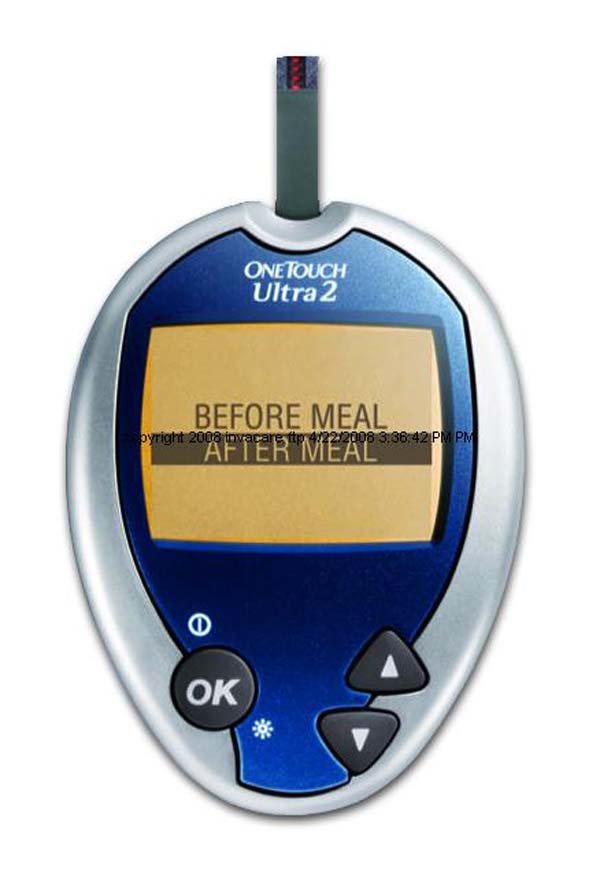 Diabetes
Diabetes
According to the Canadian Institute of Health Research, about 1 million Canadians have been diagnosed with diabetes, and each year a further 60,000 cases are diagnosed. It is estimated that there are 700,000 more Canadians who have Diabetes, but who have gone undiagnosed. There are also many complications associated with Diabetes, such as heart disease, kidney disease and blindness. Diabetes is also the seventh leading cause of death in Canada.
What is Diabetes?
During the normal digestive process, sugars and starches in the foods we eat are converted into glucose. The body’s pancreas produces insulin which is essential to help sugars leave the bloodstream and enter the body’s cells, and thereby provide the body with energy. In a person with diabetes, the pancreas either fails to provide insulin, or does not provide enough or of insufficient quality, to meet the body’s needs.
There are two main types of diabetes- Type 1 and Type 2:
Type 1 Diabetes - the body produces little or no insulin, resulting in insulin dependence. Symptoms, which usually happen very quickly, include increased hunger or thirst, going to the bathroom more frequently, weight loss and fatigue.
Type 2 Diabetes – this is the more common type of diabetes, as over 90% of people who are diagnosed have Type 2 diabetes. The body produces insulin, but cannot use it efficiently. Symptoms include: increased thirst or hunger, fatigue, dry itchy skin, slow healing of cuts and sores, infections, and blurred vision.
Gestational Diabetes – this type of diabetes occurs mainly during pregnancy, and generally disappears after a woman has given birth. This can happen if a woman is overweight before becoming pregnant, has a family history of diabetes, or has had a history of delivering large babies.
Who can develop Diabetes?
Type 1 Diabetes is usually diagnosed in childhood and involves an abnormal autoimmune response that destroys insulin-producing cells in the pancreas, requiring daily insulin injections. Type 2 diabetes typically begins in adulthood, is associated with both lifestyle and genetic factors, and can reduce life expectancy by several years.
What causes Diabetes?
When the body cannot manufacture enough insulin, diabetes develops. While the exact causes of diabetes are not entirely understood, it is known that diabetes is hereditary, and quite often related to being overweight. It can surface during emotional stress, serious illness or pregnancy (as mentioned, known as gestational diabetes), and is more frequently diagnosed in people over 40 years of age.
What are the Signs and Symptoms of Diabetes?
It is crucial that the body maintain an acceptable blood sugar level at all times. Blood sugar concentration increases after meals. How does this work? A signal is sent to the pancreas to secrete insulin into the blood stream. Insulin prevents the liver from producing more glucose, and also stimulates the use of glucose by the body. Blood sugar fluctuations are experienced by everyone throughout the day, and are easily controlled by a properly working pancreas.
Symptoms of Diabetes may include increased hunger or thirst, going to the bathroom more frequently, dry itchy skin, weight loss, fatigue, dry itchy skin, slow healing of cuts and sores, infections, or blurred vision.
What are some of the Management Options?
The treatment of diabetes can include nutrition therapy, insulin, or tablets (some may not require either), exercise, on-going diabetes education, and improving the ability to cope with stress.
Urine testing was formerly the only tool for individuals with diabetes to assess its control. As glucose levels in the body reach a certain level, the excess spills over into the urine. That method, however, was not accurate enough to assess changes in medication dosage or dietary needs; as well it did not check for low blood sugars resulting in Hypoglycemia*.
* Hypoglycemia results when there is not enough glucose (sugar) in the blood, and caused by:
· Strenuous exercise
· Eating too little, or skipping a meal/snack
· Drinking alcohol on an empty stomach
This low blood sugar condition can be quickly remedied with Fruit Juice, or Candy; Glucose Tablets are considered the most effective.
 One of the most readily available management systems available is Blood Glucose Monitoring, which are easy to use and provide quick and accurate results in a matter of seconds. See your Walsh’s Pharmacy pharmacist, or Associate for your personal training session.
One of the most readily available management systems available is Blood Glucose Monitoring, which are easy to use and provide quick and accurate results in a matter of seconds. See your Walsh’s Pharmacy pharmacist, or Associate for your personal training session.
In addition to testing blood sugar levels, you can create your own diabetes management plan that includes testing, recording of readings, as well as long-term control. Your plan should also include a diet, exercise and your medication regimen.
Some Management Tips:
It is strongly recommended that you Test Frequently, and that you speak with your health care providers about how frequently, and at which times during the day to test. This will help determine when and why your blood sugar levels change. Any pain associated with testing, and there might be some, should not deter you from testing. The comfort of different lancets varies significantly, and it is advisable that you speak with a Walsh’s Pharmacy pharmacist or our Diabetes Educator(s) about your specific needs.
Keep a Diary of your blood sugar tests. Every time you enter your blood sugar levels, write in the details of what you ate, what exercise you undertook, as well as any other factors that may have affected your blood sugar readings. Ask your Walsh’s Pharmacy pharmacist or our Diabetes Educator(s) about how to start and maintain a daily diary.
Achieve long-term control by asking your doctor about the glycosylated hemoglobin test- generally referred to as the HbA1c test, which provides an average of your previous blood sugar level readings. This test will provide an overall look at how well blood sugar levels are being maintained over time.
People with Diabetes must follow a proper diet program, and sometimes take medications to control normal blood sugar fluctuations. Only your doctor can decide the best course of treatment for your diabetes.
Remember to follow through on routine tests and check-ups such as blood pressure, annual eye examinations, and semi-annual dental exams. As well, you should be aware people with Diabetes are susceptible to more severe and prolonged difficulties with foot care. See the information section on Foot Care in this website regarding proper foot maintenance.
Proper foot care consists of daily washing and thoroughly drying of feet; a daily examination for signs of cuts, bruises and infection; toenails are trimmed straight; shoes must not be tight-fitting, and socks must always be comfortable to wear, non-restricting as well as free of any seams/knots, etc.
See your Walsh’s Pharmacy pharmacist, or one of our Health & Lifestyle Associates for suggestions and recommendations of proper foot wear. Walsh’s Pharmacy carries a full range of diabetic socks, and has available (by special order) a complete line of appropriate footwear products for diabetic patients.
And remember to ask your Walsh’s Pharmacy pharmacist about the many programs available to help you manage your Diabetes symptoms- from our On-line informational Health Resources and In-store Patient Library to our MedsCheck programs (Personalized Multiple Medication Review) and Rx Buddy (Medication Compliance Packaging Program). We’re here to help.
Website Links:
http://www.phac-aspc.gc.ca/index-eng.php
http://www.diabetes.ca/
http://www.jdrf.ca/
http://www.simcan.net/
http://www.cihr-irsc.gc.ca/e/193.html
http://www.hc-sc.gc.ca/index-eng.php
.png)
.png)





